
Journal of Materials and Engineering Structures
Scope & Guideline
Transforming Ideas into Engineering Excellence
Introduction
Aims and Scopes
- Materials Science and Engineering:
Research on the properties, performance, and applications of materials used in construction, including concrete, steel, composites, and sustainable materials. - Structural Analysis and Design:
Investigations into the behavior, stability, and resilience of structures under various loading conditions, including seismic, thermal, and dynamic loads. - Sustainable Construction Practices:
Focus on the use of recycled materials, waste minimization, and eco-friendly construction techniques aimed at enhancing sustainability in engineering. - Innovative Construction Techniques:
Exploration of new methodologies in construction, including prefabrication, additive manufacturing, and the use of advanced computational techniques for design and analysis. - Performance Evaluation and Testing:
Experimental and numerical studies assessing the mechanical properties, durability, and long-term performance of construction materials and structures.
Trending and Emerging
- Geopolymer and Sustainable Concrete Technologies:
An increasing number of studies focus on geopolymer concrete, high-volume fly ash, and other sustainable materials, reflecting a growing interest in reducing carbon footprints in construction. - Advanced Composite Materials:
Research into the use of advanced composites, including fiber-reinforced polymers and nanomaterials, is trending, driven by their potential to enhance structural performance and durability. - Data-Driven Structural Health Monitoring:
The integration of machine learning and data analytics for assessing structural health and performance is emerging, showcasing a shift towards smart engineering solutions. - Innovative Reinforcement Techniques:
There is a growing focus on innovative reinforcement methods, including the use of synthetic fibers and hybrid materials, to improve the mechanical properties of concrete. - Seismic Resilience and Disaster Mitigation:
Research related to enhancing the seismic performance of structures and exploring mitigation strategies for natural disasters has gained traction, reflecting global concerns about safety and resilience.
Declining or Waning
- Traditional Construction Materials:
Research on conventional materials like plain concrete and ordinary steel has decreased, as the emphasis has shifted towards innovative and sustainable alternatives. - Basic Structural Analysis Techniques:
There is a waning interest in foundational structural analysis methods, as newer computational and simulation techniques gain traction among researchers. - Generalized Environmental Impact Studies:
Studies that broadly address environmental impacts without specific focus on innovative solutions or materials have seen a decline, as there is a growing demand for targeted, actionable research. - Historical Structures and Preservation Techniques:
Research focused on historical building preservation and restoration has become less frequent, possibly due to a shift in interest towards modern engineering challenges and sustainable practices. - Localized Soil Mechanics:
Investigations into soil mechanics specific to certain regions or types have diminished, reflecting a broader trend towards generalized or standardized testing and analysis methods.
Similar Journals
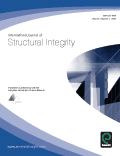
International Journal of Structural Integrity
Championing High-Impact Research in Engineering DisciplinesInternational Journal of Structural Integrity is a premier peer-reviewed academic journal published by EMERALD GROUP PUBLISHING LTD in the United Kingdom. As a valuable resource in the fields of Civil and Structural Engineering, Mechanical Engineering, and Mechanics of Materials, this journal serves to advance knowledge and foster innovation in these critical areas of study. With an impressive impact factor reflected in its 2023 category quartiles, ranking Q2 across multiple engineering disciplines, the journal is recognized for its contributions to research and practical application. Researchers can benefit from its rigorous publishing standards that encompass a wide array of interdisciplinary topics pertaining to structural integrity. Accessing the journal is facilitated for those seeking high-quality research and findings, vital to both academia and industry. Since its inception in 2010 and extending until 2024, the journal continues to attract scholarly articles that push the boundaries of engineering knowledge, making it an essential platform for professionals, students, and researchers seeking to stay at the forefront of structural engineering."
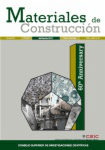
MATERIALES DE CONSTRUCCION
Transforming Construction with Cutting-edge ResearchMATERIALES DE CONSTRUCCION is a leading international journal dedicated to the fields of Building and Construction, Materials Science, and Mechanics of Materials, published by the CONSEJO SUPERIOR INVESTIGACIONES CIENTIFICAS-CSIC in Spain. With a rich history dating back to 1957 as an Open Access journal, it provides an invaluable platform for disseminating research findings that advance the science and application of materials in construction and engineering. The journal, indexed in Scopus, maintains a Q2 ranking in esteemed categories such as Building and Construction, and demonstrates significant impact with its ranking placements, including #91 in Building and Construction and #197 in Mechanics of Materials. Aimed at researchers, professionals, and students, MATERIALES DE CONSTRUCCION is committed to publishing high-quality studies that reflect the latest advancements in the discipline, fostering innovation and collaboration within the scientific community. For its readers, the journal offers a wealth of knowledge accessible from anywhere, ensuring that vital research is shared and utilized across the globe.

International Journal of GEOMATE
Elevating knowledge in building and environmental sciences.The International Journal of GEOMATE, published by GEOMATE INT SOC based in Japan, is a pivotal resource for scholars and practitioners in the fields of Building and Construction, Environmental Engineering, Geotechnical Engineering, and Soil Science. Established in 2011 and continuing to set the standard in its focus areas, this journal serves as a platform for innovative research and practical applications, with contributions that significantly enhance the understanding and development of sustainable engineering practices. With its current classification in the Q3 quartile across multiple categories, it strives to disseminate critical knowledge and foster dialogue among a diverse audience, including researchers, industry professionals, and students. Though operating under a traditional subscription model, the journal's emphasis on rigorous peer review and high-quality publications ensures a substantial impact factor, further reinforcing its reputation in academia. Spanning from 2011 to 2024, the International Journal of GEOMATE invites contributions that advance the knowledge frontier and address contemporary challenges in engineering and environmental science.
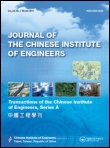
JOURNAL OF THE CHINESE INSTITUTE OF ENGINEERS
Catalyzing academic exchange in the realm of engineering.The Journal of the Chinese Institute of Engineers, published by Taylor & Francis Ltd, serves as a vital platform for the dissemination of innovative research in the field of engineering. Since its inception in 1978, this journal has been committed to advancing knowledge and fostering academic dialogue in general engineering and its multidisciplinary applications. With its current ranking of Q3 in the 2023 Engineering (miscellaneous) category, it is recognized within Scopus as the 139th out of 307 journals, placing it in the 54th percentile of its field. The journal facilitates access to a diverse range of high-quality articles, promoting a deeper understanding of contemporary engineering challenges. Although it does not operate on an open-access model, its insights are invaluable for researchers, professionals, and students eager to stay at the forefront of engineering advancements. Located in Oxford, England, the journal is poised to continue its influential role in shaping the future of engineering research until 2024 and beyond.
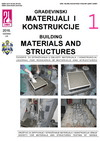
Gradevnski Materijiali I Konstrukcije-Building Materials and Structures
Connecting researchers to revolutionize construction methodologies.Gradevnski Materijiali I Konstrukcije - Building Materials and Structures is a premier open-access journal dedicated to advancing the field of construction materials and structural engineering. Published by SOC MATERIALS & STRUCTURES TESTING SERBIA, this journal provides a platform for researchers, professionals, and students to share their innovative findings and developments in building materials. With a commitment to open-access since 2012, it fosters unrestricted availability of research for a wider audience, encouraging collaboration and knowledge dissemination. The journal features a diverse range of topics, including material testing, structural integrity, and sustainable construction practices, making it a vital resource for those engaged in the design and analysis of structural components. By fostering the advancement of research and practice in this crucial sector, Gradevnski Materijiali I Konstrukcije plays an essential role in shaping the future of construction and material science.

Periodica Polytechnica-Civil Engineering
Pioneering Solutions for Modern Infrastructure NeedsPeriodica Polytechnica-Civil Engineering is a prestigious journal published by the Budapest University of Technology and Economics, dedicated to advancing the field of civil engineering through high-quality research and innovative practices. Established in 1972, the journal has transitioned through various phases of publication and now spans an expansive range of topics within civil and structural engineering, geotechnical engineering, and engineering geology. With an impact factor indicating its growing influence and a commendable placement in the Q3 quartile according to the latest 2023 metrics, it recognizes contributions that bridge theoretical advancements with practical applications. While currently not open access, the journal remains a vital resource for researchers, professionals, and students seeking to stay abreast of the latest developments in engineering design, construction techniques, and geotechnical innovations. The continuous publication of significant research after almost five decades underscores its commitment to disseminating knowledge crucial for the world’s infrastructure challenges, making it an essential reference point within the engineering community.

Magazine of Civil Engineering
Building the Future: Research and Trends in Civil EngineeringMagazine of Civil Engineering, published by ST-PETERSBURG STATE POLYTECHNICAL UNIVERSITY, is a prominent open access journal dedicated to the field of civil and structural engineering. With an ISSN of 2712-8172 and E-ISSN 2071-0305, it serves as a vital platform for disseminating high-quality research, innovative methodologies, and current trends in building and construction. Since its inception in 2010, the journal has embraced open access, ensuring broad visibility and accessibility for its contributions to the academic community. The magazine holds a respectable position in the academic hierarchy, ranked in the Q3 quartile for both Building and Construction and Civil and Structural Engineering categories as of 2023. It is indexed in Scopus, amplifying its societal impact and reach with a rank of #114/223 in Building and Construction and #224/379 in Civil and Structural Engineering. Researchers, professionals, and students alike are encouraged to engage with the cutting-edge studies presented in the magazine, contributing to the advancement of knowledge and practice within the civil engineering domain.

Revista de la Construccion
Advancing Civil Engineering Knowledge for a Sustainable FutureRevista de la Construcción is a pivotal academic journal dedicated to the field of civil engineering and construction, published by the prestigious Pontificia Universidad Católica de Chile, Escuela de Construcción Civil. With its ISSN 0718-915X, this journal serves as a crucial platform for disseminating innovative research, case studies, and advancements in construction methodologies that address contemporary challenges within the industry. While currently not classified as open access, it provides valuable insights benefiting researchers, professionals, and students engaged in construction development and sustainability. The journal enhances the academic discourse and contributes significantly to knowledge in engineering practices, project management, and material science. Based in Santiago, Chile, the journal aims to foster collaboration and knowledge exchange among experts both locally and globally, making it an essential resource for those striving to advance the science and practice of construction.
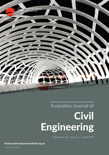
Australian Journal of Civil Engineering
Elevating Standards in Engineering ResearchThe Australian Journal of Civil Engineering, published by Taylor & Francis Ltd, stands as a pivotal platform within the field of civil and structural engineering. With an ISSN of 1448-8353 and an E-ISSN of 2204-2245, this journal consistently delivers high-quality research and innovative practices from both established and emerging scholars in the discipline. Recognized in the Q2 category for Civil and Structural Engineering in 2023, it holds a respectable position, ranking 146 out of 379 within its field according to Scopus, which places it in the 61st percentile. Converging valuable insights from 2011 through 2024, the journal encompasses a broad scope of topics, including sustainable infrastructure, innovative materials, and advanced construction techniques, thereby addressing contemporary challenges faced by engineering professionals. Though it is a traditional publication without open access options, the quality of the research featured ensures that it remains an essential resource for academics, practitioners, and students striving to enhance their knowledge and contribute to the dynamic field of civil engineering.
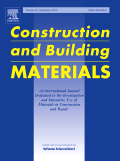
Construction and Building Materials
Pioneering research at the intersection of materials and engineering.Construction and Building Materials, published by ELSEVIER SCI LTD, is a highly regarded journal in the fields of Construction and Building, Civil and Structural Engineering, and Materials Science. With an impressive Q1 ranking across multiple categories in 2023, the journal is recognized for its high-impact research, reflected in its Scopus rankings—13th out of 379 in Civil and Structural Engineering and 9th out of 223 in Building and Construction. Spanning from 1987 to 2024, it serves as a pivotal resource for researchers, professionals, and students aiming to explore advances in materials used in construction and their applications. However, it does not currently offer Open Access options. The journal stands as a vital platform for disseminating cutting-edge findings that can drive innovation and efficiency in the construction industry while addressing contemporary challenges, thus reinforcing its significance in shaping sustainable practices and technological advancements.